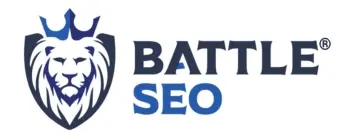Examining content gaps is essential for businesses seeking to enhance their online presence and engage more efficiently with their target audience. By pinpointing the absent components in their content strategy, companies can align their offerings more effectively with customer demands and the requirements of search engines. This analysis sheds light on opportunities for new content creation and reveals insights into refining existing materials to improve overall performance. Whether you’re selling products or services, understanding and implementing a thorough content gap analysis can be a game-changer in today’s competitive digital landscape. In the following sections, we will delve into the intricacies of content gap analysis, from its definition and SEO implications to the execution and best practices, equipping you with the knowledge to optimize your content strategy for maximum impact.
Understanding Content Gap Analysis
Delving into the realm of Content Gap Analysis unveils a strategic approach integral to SEO success. This methodical process uncovers the content that potential customers seek but have not yet found within your digital domain. It serves as a critical link, connecting your current content offerings to the unmet needs of your target audience.

At the heart of this analysis lies pinpointing the topics, keywords, and content types propelling your competitors forward while remaining absent or underrepresented on your own site. Engaging in Content Gap Analysis equips businesses with the insights to identify these ‘gaps’ in their content strategy. This empowers them to craft a more robust content plan that resonates with user intent and adheres to search engine guidelines, enhancing traffic and user interaction.
The significance of Content Gap Analysis in the context of SEO is profound. It guides the development and refinement of content strategies, ensuring that the material is pertinent and engaging to the intended audience and addresses the unmet market needs that competitors may have missed.
By setting clear objectives for uncovering areas of opportunity, Content Gap Analysis transcends the outdated practices of keyword stuffing and random content generation. It harmonizes business goals with the preferences of both users and search engines, laying the groundwork for heightened online visibility and interactive experiences. The forthcoming sections will explore the intricacies of executing Content Gap Analysis, the tools that facilitate this process, and the best practices that amplify its impact, culminating in enduring SEO achievements.
Definition and Role in SEO
Content Gap Analysis involves a comprehensive review that matches a website’s existing content with the desired content that remains elusive to potential customers. This evaluation scrutinizes the topics, keywords, and user inquiries that may have been overlooked or insufficiently covered, highlighting opportunities for content creation or enhancement to satisfy user inquiries better and capture more organic search traffic.
In the SEO landscape, the importance of Content Gap Analysis is twofold. Firstly, it ensures that a website emerges as a comprehensive information hub that captivates and educates its audience. Secondly, it leverages the unmet demands within a specific niche or sector. Filling these voids with high-quality content signals the site’s value as a resource to search engines, bolstering its relevance and authority. This increase in stature can lead to improved search rankings, heightened visibility, and a surge in organic traffic.
By examining user queries that drive traffic to your website and identifying gaps, you can customize your content to match their expectations better. This strategic synchronization is vital in attracting traffic that is more likely to engage meaningfully with your content, as it directly caters to their needs.
Thus, Content Gap Analysis’s role in SEO is responsive and anticipatory. It responds to the existing content landscape by rectifying shortcomings and proactively adjusting to user behavior by predicting future content requirements. This dual role is essential for sustaining a competitive advantage in today’s digital marketplace, ensuring that a website remains pertinent and accessible to the audience it seeks to captivate.
Goals of Content Gap Analysis
When embarking on a Content Gap Analysis journey, the goal is to enhance a website’s performance across various aspects.. A pivotal objective is uncovering content enhancement and growth avenues, thereby boosting user engagement and satisfaction. This process is akin to solving a puzzle, where the goal is to find and place the missing pieces your audience is actively seeking but has yet to discover on your platform.
Moreover, this analytical endeavor lays the foundation for amplifying your site’s subject-matter expertise. Addressing these content voids makes your site a credible and comprehensive information hub within its domain. Such established authority garners user trust and gains favor with search engine algorithms.
The pursuit also includes bolstering the site’s visibility in organic search results. By populating the identified content voids with high-caliber, pertinent material, your site has a better chance of ranking across a broader spectrum of search queries, enhancing its search result prominence.
A proactive aspect of Content Gap Analysis is to stay one step ahead of the competition. By dissecting and assimilating the content offerings of your rivals, your site can carve out unique content territories or delve deeper into topics where competitors may not have as strong a foothold.
Ultimately, this analysis ensures your content strategy is in lockstep with your business goals. Whether the aim is to drive traffic, generate leads, boost sales, or enhance brand awareness, every content piece should serve a strategic function. This alignment allows for a more efficient deployment of resources, time, and creative efforts to yield measurable outcomes.
Executing Content Gap Analysis
Implementing Content Gap Analysis is a methodical process. It begins with pinpointing your competition, as these entities provide a benchmark against which to measure your content’s standing. This initial step is essential, paving the way for future strategic maneuvers.

Once competitors are identified, the next phase is an in-depth keyword exploration. This step goes beyond analyzing your current keyword rankings to include keywords your competitors are targeting but your site has yet to capitalize on. Unearthing these opportunities allows your content to reach new audiences and address previously untapped topics.
Following the keyword discovery, it’s time to take stock of your existing content through a meticulous inventory. This audit categorizes and evaluates each piece of content for its effectiveness in engaging your audience. Understanding the current state of your content is vital for identifying how it can be optimized.
Armed with this information, you can proceed to the gap analysis core. This stage involves juxtaposing your content against the insights gleaned from keyword and competitor analyses. It’s a process that reveals where your content falls short, aligns with, or surpasses your competitors. More importantly, it uncovers the strategic path to fill those gaps efficiently.
The culmination of this process is the strategic planning phase. Here, the insights are translated into a concrete plan that may involve crafting new content, refining existing pieces, or phasing out content that no longer serves its purpose. This phase is critical in steering your website’s SEO trajectory toward improved content relevance and performance.
Competitor Identification
Embarking on a Content Gap Analysis begins with the critical task of Competitor Identification. This step entails discerning which websites compete for your target market’s attention online. By identifying these competitors, you gain a yardstick to measure the effectiveness of your content.
Initiate this process by cataloging businesses that mirror your offerings. These direct competitors likely aim for the same keywords and audience segments, making them prime subjects for comparison.
Yet, it’s equally important to consider indirect competitors. These are entities that, while not offering identical services, still vie for the same keywords or engage similar audiences. Their content strategies might reveal areas you haven’t yet capitalized on.
Diverse tools and techniques can streamline this identification phase. Conducting a SERP analysis can uncover who is ranking for your chosen keywords. Additionally, delve into industry forums, social media, and the insights from Google’s ‘People also ask’ feature to pinpoint authoritative voices in your niche.
Don’t limit your analysis to the front-runners. Investigating websites on the second or third pages of search results can unearth emerging players who may be addressing content areas ripe for your input.
With a robust list of competitors, categorize them by domain authority, content caliber, audience engagement, and search rankings. This hierarchy will allow you to focus on competitors who present the most significant challenge or could offer the most instructive insights for refining your content strategy. A nuanced grasp of the competitive field is a cornerstone of a successful Content Gap Analysis, setting the stage for enhanced SEO performance.
Comprehensive Keyword Research
Following the identification of your competitors, the next phase is comprehensive keyword research. This pivotal step involves uncovering the search terms and queries that your audience is using, which may not be fully addressed by your current content offerings.
Start with your industry’s seed keywords, the broad terms central to your business. From there, branch out into long-tail keywords—more detailed phrases that clearly indicate user intent. You’ll often find the most significant content opportunities in these long-tail keywords.
Keyword research tools are indispensable in this endeavor. They can broaden your keyword scope, show search volumes, conduct competitive analyses, and even pinpoint keyword gaps by contrasting your content with that of your competitors.
Beyond primary keywords, delve into related queries and subjects. As semantic search gains prominence, understanding the context surrounding your keywords can unlock additional content avenues.
Dissecting the intent behind each keyword is crucial. Whether users are gathering information, ready to purchase, or comparing options, aligning your content with their journey is key. Aim to map your content to various stages of the buyer’s journey, addressing needs from awareness to decision-making.
Keep an eye on trends and emerging terms with tools like Google Trends to identify burgeoning keyword opportunities that might not yet be saturated with competition but are gaining traction with your audience.
Keyword research is a dynamic and ongoing process. As the digital landscape shifts, so should your keyword strategy, ensuring your content’s continued relevance and competitive edge.
Conducting a Content Inventory
Embarking on a content inventory is a pivotal step following your competitor scrutiny and in-depth keyword exploration. This process entails meticulously examining your website’s content assets to gauge their current state and identify opportunities for optimization to bridge any content voids.
Begin by cataloging every content element on your site, from web pages and blog entries to white papers, case studies, and multimedia resources. Assign each item descriptors such as title, format, URL, publication date, associated keywords, and performance indicators, including traffic, user engagement, and conversion rates.
With this information at your disposal, scrutinize each content piece for its alignment with your SEO objectives and its resonance with your audience’s search inclinations, as informed by your prior keyword analysis. It’s essential to recognize content that is lagging or has become obsolete. Such content may benefit from updates, repurposing, or retirement to enhance its relevance and SEO value.
This inventory should also spotlight content performing well, which could serve as a template for future content or be further developed. By comparing your most successful content against yours, you can extract valuable insights into what resonates with your audience and search engines.
Finally, ensure your inventory is structured for easy access and future updates. View this inventory as a dynamic resource supporting continuous content strategy refinement, fostering a cohesive and effective SEO campaign.
Gap Analysis and Strategic Planning
With your comprehensive content inventory at the ready, alongside your keyword research findings, you’re poised to undertake Gap Analysis and Strategic Planning. This phase is about pinpointing where your content falls short and crafting strategies to rectify these deficiencies.
Perform a gap analysis by juxtaposing your content with the keywords and topics, yielding results for your competitors. Identify subjects they cover that you have yet to explore—these represent your content gaps. Additionally, pinpoint areas on your site where existing content may not be satisfying user needs to the fullest, as indicated by the search intent behind keywords.
Strategic planning kicks off with determining the best approach to fill these gaps. Consider whether to craft new content or enhance what you already have. Prioritize these gaps by their potential to impact your SEO positively—whether through increased traffic, user engagement, or establishing your authority in key subject areas.
Establish specific, quantifiable goals for each new or updated content piece designed to bridge a gap. Determine how you will monitor its effectiveness and the benchmarks for gauging progress. These goals should be in harmony with your overarching SEO and business objectives.
Integrate these priorities into a content calendar outlining the creation and release timeline. Your strategy should also encompass technical SEO enhancements, such as meta tags optimization, internal linking enhancements, and refreshing stale content, which are vital for online visibility.
Facilitate seamless content development and review by defining roles, setting timelines, and upholding quality standards.
While gap analysis is grounded in data, the art of crafting content that captivates and serves your audience is equally important. Strive for a balance between SEO and creating content that is engaging and valuable to your audience.
Strategic planning is the art of turning insights into tangible outcomes. A meticulously executed plan will elevate your SEO results, enhance user satisfaction, and fortify brand allegiance.
Tools to Aid Content Gap Analysis
Navigating the intricacies of Content Gap Analysis demands a robust toolkit. These digital aids are not just about collecting data but about distilling it into actionable insights.

Consider SEO platforms and content audit tools as your digital assistants. They automate the inventory process and shed light on the performance of your content, offering insights into keyword rankings, backlink profiles, and how you stack up against competitors. Imagine a suite of tools that help you identify the right keywords and keep an eye on your market rivals.
Analytics tools are equally indispensable. They delve into how users interact with your content, spotlighting the pages that captivate your audience and those needing refreshments. This knowledge is crucial for fine-tuning your content strategy, ensuring that every piece of content serves a purpose and engages your audience.
It’s important to remember that these tools are most potent in the hands of those who combine them with a solid grasp of SEO principles and a clear understanding of their business objectives and audience needs.
Choosing the appropriate combination of tools is pivotal in conducting a Content Gap Analysis that yields tangible improvements and propels your SEO efforts forward.
SEO and Content Audit Tools
SEO and Content Audit Tools are the workhorses of Content Gap Analysis, providing essential services that help assess your website’s content and its search engine performance.
Imagine an SEO audit tool as a diagnostician for your website, scrutinizing every corner to report on elements like metadata, header tags, and mobile responsiveness. These insights guide you in refining your site to meet SEO best practices.
Content auditing tools are equally adept, deploying crawlers to map your site’s pages and assembling the detailed content inventory vital for identifying gaps. They categorize content by various metrics, such as engagement or relevance, allowing you to spot underperforming content or missing critical keywords easily.
Some tools also offer the ability to track your keyword rankings, providing a window into the effectiveness of your content updates and their impact on your SEO standing.
Among the leading tools are Screaming Frog, Ahrefs, SEMrush, and MOZ, each offering distinct features to cater to different facets of Content Gap Analysis. Selecting the right tool is about aligning with your specific needs and ensuring the tool can grow with your strategy.
By harnessing these tools, you expedite the analysis process and achieve a level of precision that manual efforts might overlook, leading to a comprehensive and data-informed Content Gap Analysis.
Analytics and Performance Measurement
Delving into Analytics and Performance Measurement unveils a treasure trove of insights pivotal for refining your Content Gap Analysis. These analytics tools serve as your digital periscope, granting visibility into the depths of user interaction and the performance of your content in real time.
Key Performance Indicators (KPIs) are central to this process, which include page views, bounce rate, average time spent on a page, and conversion rates. These indicators are instrumental in gauging content’s resonance with your audience and pinpointing areas where user engagement may wane.
Platforms like Google Analytics offer a comprehensive overview, shedding light on aspects such as traffic origins, user demographics, and navigation patterns within your site. This allows you to discern which content pieces are the cornerstones of organic traffic, which captivate your audience, and where potential disengagement may occur.
When it comes to conversions, tracking is paramount. It measures how effectively your content catalyzes business objectives, from lead generation to e-commerce sales. By configuring goals within your analytics tools, you can forge a direct correlation between content initiatives and these valuable actions.
Moreover, monitoring your search engine rankings for key terms and observing the trajectory of your optimization efforts can yield actionable insights. Complement this with heat mapping technology to visualize user interaction, and you’ll gain a nuanced understanding of how visitors engage with your content.
Incorporating these analytical instruments into your SEO arsenal enables you not only to bridge content gaps but also to perpetually enhance your content’s appeal and performance, ensuring it resonates with users and search engines. However, the true power of these tools lies in their consistent application and the strategic implementation of the insights they reveal, keeping your content strategy agile and attuned to the ever-evolving digital landscape.
Content Gap Analysis Best Practices
Regarding Content Gap Analysis, adopting best practices is not just advisable; it’s imperative for achieving and sustaining SEO excellence. These practices act as a compass, guiding your strategy toward enhanced search visibility and deeper audience engagement.
A cornerstone of these best practices is an unwavering commitment to addressing user needs and search intent. This ensures that the content you craft fills the voids and resonates with your audience, providing the answers they seek.
It is also essential to strategically prioritize the gaps you aim to fill. Rather than casting a wide net, concentrate on those areas that promise the most significant return on investment—those that can amplify traffic, bolster engagement, and elevate conversion rates.
The digital content arena is akin to a living ecosystem, constantly evolving with new trends, shifting user preferences, and emerging competitors. This fluidity necessitates a commitment to continuous analysis and the agility to adapt your content strategy accordingly.
By steadfastly adhering to these best practices, your Content Gap Analysis transcends being a mere snapshot of current standings. It becomes a dynamic, forward-looking approach that ensures your digital presence is relevant today and continues to thrive in the future.
Interpreting User Intent
Delving into the intricacies of user intent is a cornerstone of Content Gap Analysis, where the goal is to discern the underlying reasons for specific search behaviors and the expectations of users. This insight is pivotal for crafting content that meets and exceeds user expectations, ensuring alignment with their search journey.
Understanding user intent begins with categorizing search queries. Users launch informational queries in pursuit of knowledge, transactional queries express a readiness to perform an action or purchase, and navigational queries aim to locate a particular website or page.
However, one must look beyond these categories and delve into the search queries’ context and linguistic nuances to truly grasp user intent. Analyzing qualitative data such as customer feedback, social media inquiries, and frequently asked questions can illuminate the motivations driving searches within your domain.
Incorporating linguistic and sentiment analysis tools can further unravel the layers of meaning in search phrases, offering a window into more profound user needs. For instance, the language used may hint at the searcher’s level of expertise or the immediacy of their need, which should influence the content’s tone and comprehensiveness.
After interpreting user intent, connecting it to appropriate content formats is crucial. Users seeking information might find comprehensive guides beneficial, whereas those with transactional goals may prefer product comparisons or reviews.
By accurately interpreting user intent, you can bridge content gaps with offerings that climb search rankings and genuinely engage your audience, fostering increased satisfaction and higher conversion rates.
Focusing on Impactful Gaps
Zeroing in on the most consequential gaps during Content Gap Analysis is a strategic move that ensures your efforts are directed toward opportunities with the highest potential for return on investment. It’s important to recognize that not all content gaps wield the same influence; thus, prioritizing them based on their prospective impact is crucial.
The prioritization process should weigh each gap’s potential to attract traffic, relevance to your target demographic, and contribution to your business goals. Search volume, keyword competitiveness, and existing content efficacy are key in identifying gaps that can boost your site’s prominence and attract the right audience.
Assessing the business value of each gap is also vital. This involves evaluating the likelihood of a topic to propel users toward a purchase or other conversion actions, thereby gauging its impact.
The strategic significance of specific topics or keywords should not be overlooked. Some gaps may unlock the door to niche market segments or enable you to carve out a position as a thought leader in less saturated areas.
Guidance for filling gaps should come from the insights gathered during your content inventory and earlier analyses. The most impactful gaps are generally those where your content is missing or lagging behind competitors, yet there is a clear indication of high user interest or search activity.
It’s essential to track the outcomes of your initiatives by monitoring metrics such as traffic, user engagement, and conversion rates. This feedback will validate the effectiveness of your prioritization and inform future directions for your content strategy.
Ongoing Analysis and Adaptation
The dynamic nature of SEO and content strategy demands a commitment to perpetual analysis and flexibility. Within the realm of Content Gap Analysis, this translates to an unwavering vigilance over your content’s performance, the ever-shifting tides of search engine algorithms, and the subtle yet significant changes in user behavior.
Revisiting your content repository regularly and aligning it with the latest keyword insights to pinpoint emerging opportunities is crucial. As search patterns fluctuate, new market players emerge, and audience preferences shift, your adaptability ensures your content’s continued relevance and competitive edge.
Establish a routine for examining your analytics, identifying lagging content segments, and pinpointing areas ripe for enhancement or a complete overhaul. Stay ahead by refreshing or expanding content to bolster search rankings and deepen user engagement.
Technical SEO advancements should also be part of your adaptation strategy. Staying abreast of the latest in mobile optimization, page load times, and overall user experience is vital, as these factors can significantly impact your content’s performance.
Encourage a culture of continuous learning within your team. Analyze the outcomes of content updates and weave these insights into your future content strategies. This might involve discerning which content formats truly resonate with your audience or noting the keyword trends that are most effective in driving traffic.
Cultivate a forward-thinking approach that not only reacts to changes but anticipates them. This proactive stance will refine your Content Gap Analysis and content strategies, fostering ongoing improvement and ensuring your content remains in lockstep with user and search engine expectations.
Concluding Content Gap Analysis
The final stage of Content Gap Analysis transcends the mere assembly of a report; it is the catalyst for strategic implementation. The insights garnered should inform and shape the evolution of your content strategy, steering the course for future content development and refinement.
To effectively wrap up the process, it’s essential to translate your findings into a structured action plan. This plan should outline the creation of new content, delineate the necessary resources, and assign clear responsibilities. It’s also important to incorporate a realistic timeline for the rollout of content and SEO enhancements.
Realizing the potential of a Content Gap Analysis is a team effort, requiring the harmonious collaboration of content creators, SEO experts, and digital marketers. This collective endeavor is key to seizing the identified opportunities, bridging content voids, and aligning with user expectations.
Moreover, this concluding phase lays the groundwork for an iterative process. Establishing a system for regular reassessment and refinement of your gap analysis is imperative to stay competitive in an ever-evolving digital environment.
By diligently applying the insights from Content Gap Analysis, your content strategy is poised for ongoing growth and engagement, driving meaningful SEO and business outcomes.
Implementing Findings
The culmination of a Content Gap Analysis is the strategic execution of your findings. This is the stage where you translate insights into action, crafting or refining content to bridge the identified gaps.
Start by charting a course with a content calendar or strategic roadmap that reflects the priorities unearthed during the analysis. Decide if you’ll be introducing new topics, enriching existing articles, or enhancing the overall quality of your content to meet the needs highlighted by your research. Remember, the focus here is on filling gaps and aligning with user intent and maximizing the potential impact.
Rally your creative teams to develop content that resonates with your audience and search engines. Utilize the deep dive into user preferences to inform the creation of SEO-optimized content that captures organic traffic.
For content that’s already part of your repertoire but needs a facelift, consider updates that boost its relevance and appeal. This could mean refreshing outdated information, integrating multimedia for a richer experience, or restructuring for better readability.
Foster a collaborative environment where SEO specialists, content creators, and designers work together, ensuring that every piece of content aligns with your broader digital marketing objectives.
As you roll out updates and new content, watch their performance closely. Employ analytics tools to track rankings, traffic, and user engagement shifts. Be prepared to refine your strategy based on this feedback, maintaining a dynamic and responsive approach to content optimization.
Encouraging Reader Engagement
After plugging the holes in your content strategy, the next critical step is to nurture reader engagement. High engagement levels are a testament to content relevance and quality and contribute to better search rankings and overall SEO performance.
Craft content that resonates with your audience by addressing their interests and answering their needs, which you’ve pinpointed through their search intent. Adopt a conversational and approachable tone, breaking down complex information into bite-sized pieces with clear headings, concise paragraphs, and lists for easier consumption.
Introduce interactive features like surveys, quizzes, or forums to invite user participation. Rich media such as videos, infographics, and high-quality images can also significantly boost dwell time and encourage social sharing.
Strategically placed calls-to-action should guide readers toward meaningful engagement, whether further exploring your content, subscribing to updates, or discovering your products. These CTAs should flow naturally from the content and offer tangible benefits to the audience.
Monitor engagement metrics like dwell time, session duration, bounce rates, and social interactions to evaluate the success of your engagement strategies. These insights are invaluable for ongoing content refinement.
By delivering a superior user experience and valuable content, you foster return visits and brand evangelism, extending your content’s reach and influence. Aim to create a vibrant community around your content, transforming readers into active contributors and advocates for your brand.
GAP Analysis FAQs
1. How is a Content Gap Analysis performed?
Performing a Content Gap Analysis involves several steps, which include defining your goals, studying competitor content, gauging audience requirements, identifying keywords, and finally, developing a strategy to fill the gap.
2. Why is audience analysis crucial in Content Gap Analysis?
Audience analysis is pivotal because it helps understand what content consumers need or crave. Gaining these insights allows companies to create content that resonates better with their audience and fills any existing informational void.
3. How do SEO and keyword analysis factor into Content Gap Analysis?
SEO and keyword analysis play a crucial role in Content Gap Analysis. Companies identify the keywords they are ranking well for and those they aren’t. This helps in determining content areas that need enhancement.
4. How often should businesses conduct Content Gap Analysis?
Businesses should conduct Content Gap Analysis regularly. As market trends and customer preferences frequently change, a regular gap analysis ensures a company’s content remains relevant, up-to-date, and aligned with audience needs.


